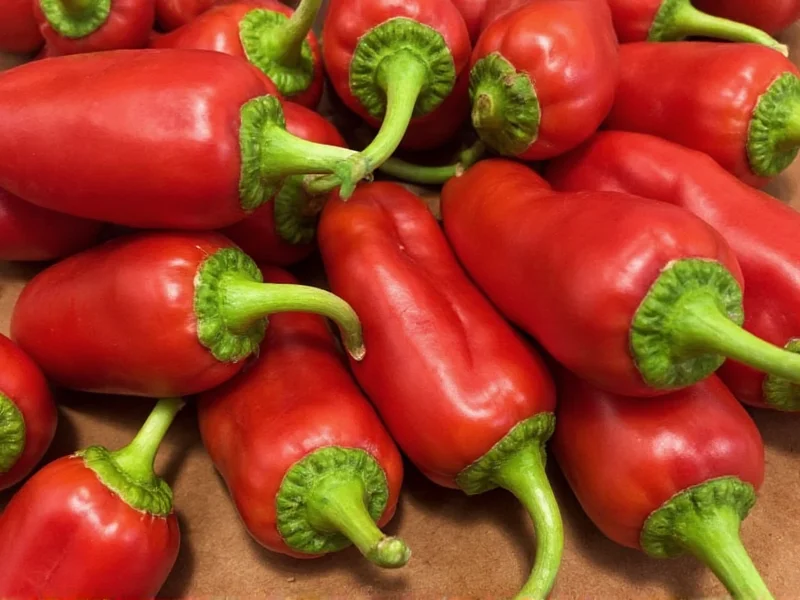Understanding pepper longevity helps prevent food waste and ensures your dishes maintain optimal flavor. Unlike perishable foods, dried peppers don't spoil in the traditional sense but gradually lose potency and flavor over time. The shelf life varies significantly based on whether you're using whole peppercorns or ground pepper, and how you store them.
Pepper Shelf Life by Type
The physical form of your pepper dramatically impacts how long it retains its characteristic heat and aroma. Whole peppercorns preserve their essential oils much longer than ground varieties because they have less surface area exposed to degrading elements.
| Pepper Type | Optimal Shelf Life | Peak Flavor Period | Storage Recommendation |
|---|---|---|---|
| Whole Black Peppercorns | 3-4 years | 1-2 years | Airtight glass container in dark pantry |
| Ground Black Pepper | 2-3 years | 6-12 months | Vacuum-sealed container away from stove |
| White Peppercorns | 2-3 years | 1-2 years | Cool, dark place with minimal humidity |
| Cayenne Pepper/Chili Flakes | 2-3 years | 1-2 years | Airtight container with oxygen absorber |
Factors That Affect Pepper Longevity
Several environmental factors accelerate pepper degradation. Understanding these helps maximize your spice investment:
Light Exposure
Ultraviolet light breaks down piperine, the compound responsible for pepper's heat and flavor. Clear containers on your countertop expose pepper to damaging light. For extended shelf life, store pepper in opaque containers or in dark pantry spaces.
Moisture and Humidity
Pepper readily absorbs moisture from humid environments, leading to clumping and potential mold growth. The ideal storage environment maintains humidity below 60%. Avoid storing pepper near sinks, dishwashers, or steam-producing appliances.
Air Exposure
Oxygen causes oxidation of essential oils in pepper. Each time you open a container, you introduce fresh oxygen that degrades quality. For frequently used pepper, consider transferring a small amount to a countertop container while keeping the bulk supply sealed in optimal conditions.
Proper Pepper Storage Techniques
Implement these storage methods to extend your pepper's shelf life and maintain maximum flavor:
Container Selection Matters
Choose airtight containers made of non-reactive materials. Glass jars with tight-sealing lids outperform plastic containers, which can absorb odors and allow minute air exchange. For premium protection, consider containers with rubber gaskets or vacuum-sealed options.
Ideal Storage Locations
Your kitchen's "hot spots" significantly reduce pepper longevity. Avoid these common storage mistakes:
- Don't store above the stove where heat and steam degrade quality
- Avoid clear containers on open shelves exposed to light
- Never keep pepper in the refrigerator where moisture condensation occurs
The optimal location is a cool, dark pantry cabinet away from heat sources, maintaining a consistent temperature between 60-70°F (15-21°C).
Signs Your Pepper Has Lost Quality
While pepper rarely becomes unsafe to consume, degraded quality affects your cooking. Recognize these indicators that your pepper has passed its prime:
Visual Changes
Faded color indicates diminished potency. Black pepper should maintain its deep brown hue, while white pepper should stay ivory. Discoloration toward gray or yellow suggests significant degradation.
Aroma Test
Fresh pepper delivers an immediate, pungent aroma when opened. If you need to inhale deeply to detect any scent, the volatile oils have dissipated. Properly stored whole peppercorns should release fragrance when crushed between fingers.
Flavor Diminishment
The most reliable test involves tasting a small amount. High-quality pepper provides immediate heat followed by complex floral and woody notes. Stale pepper tastes flat and one-dimensional, lacking the characteristic bite that defines fresh pepper.
Maximizing Pepper Freshness
Follow these practical tips to get the most from your pepper supply:
Buy Whole and Grind Fresh
For optimal flavor, purchase whole peppercorns and grind them as needed. A quality pepper mill preserves essential oils until the moment of use. This practice extends effective shelf life by months compared to pre-ground alternatives.
Small Batch Purchases
Resist bulk buying unless you'll use the entire quantity within a year. Smaller quantities ensure you're always using pepper at its peak. Specialty spice retailers often offer smaller, fresher batches compared to supermarket stocks that may have languished in warehouses.
Freezing for Long-Term Storage
For extended preservation beyond three years, freeze whole peppercorns in airtight containers. The deep freeze halts degradation processes. Allow containers to reach room temperature before opening to prevent condensation. Frozen peppercorns maintain quality for 5+ years.
Special Considerations for Specialty Peppers
Different pepper varieties have unique storage requirements:
Cayenne and Chili Flakes
These heat-forward peppers contain capsaicin, which degrades faster than piperine. Store in the freezer for maximum longevity. The vibrant red color fading to brick orange indicates significant potency loss.
Pink Peppercorns
Often confused with true peppercorns, these berries have different storage needs. They're more delicate and benefit from refrigeration in airtight containers to prevent drying out completely.
Pepper Blends
Pre-mixed blends containing salt or other ingredients have shorter shelf lives. Salt draws moisture, accelerating degradation. Use within 12 months for best results, and avoid humid environments completely.











 浙公网安备
33010002000092号
浙公网安备
33010002000092号 浙B2-20120091-4
浙B2-20120091-4